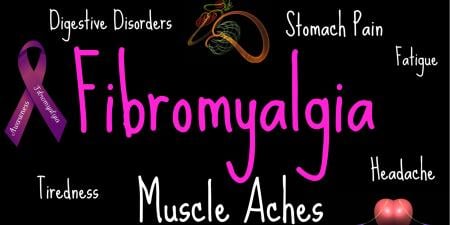First, do no harm. Clearly, this is one of the tenets of medicine and the allied health professions and is expressed in one of our core ethical principles: nonmaleficence. If we see a patient in pain and we are unable to relieve it, then, at the very least, we should not contribute further to that patient's suffering. This standard has direct ethical implications in the practice of pain management, since the medications used in this endeavor are, in large part, potentially addictive and habit-forming substances [1-3].
Pendulum Swings in Pain Management
Opioids have been available in one form or another for thousands of years, and yet they have been avoided, and pain has gone undertreated [4]. The fear of creating or worsening addiction has been one of the main reasons for this irrational avoidance of an effective but admittedly "blunt instrument" in the treatment of pain. For many decades, the exaggerated fear that exposure to these medications brought about addiction—and the intent to prevent that consequence—amounted to nonmaleficence gone awry. Paired with, perhaps, an underestimation of the benefits of simply relieving pain (as opposed to being able to correct its underlying etiology), the need to avoid addiction at all costs has led to tremendous, unnecessary patient suffering.
A paradigm shift that has affected the way opioids are used, however, has been occurring for the past 20 years in the U.S. and several other countries. Fueled by the observation that people with cancer seem to be able to take these medications and enjoy good outcomes (analgesia, enhanced activity, tolerable adverse effects, and minimal or no aberrant drug-taking) the thinking about opioid use changed. Implicit in the change is the obvious assertion that having cancer itself did not bestow protection against addiction [5-7].
As this revolution occurred, the clinical practice and rhetoric of aggressive pain management moved faster than the clinical trials, and, when groups of patients who were considerably more diverse than those with cancer were tested, the results were mixed. Unfortunately, the claims of diminished harm from drug use tended to trivialize addiction to the point where it was commonplace to hear that the risk of taking the medications was virtually nonexistent [8]. Thus, beneficence dictated that opioids could not be ethically withheld in many clinical circumstances. Under this new model, the worst thing a physician could do—ethically speaking—was to deny opioids. This position downplays at best, and trivializes at worst, the suffering, mortality, and devastation of unchecked addiction.
So professionals who treat pain find themselves at a crossroads: in many respects opioids are still the best pain relief medications we have—they have little in the way of end-organ toxicity; they have no pharmacologic ceiling, allowing for titration in the face of worsened symptoms when appropriate; and, for the most part, they are affordable. Yet we have realized that their wider use does pose a serious risk of addiction for certain vulnerable individuals [9]. Paying proper attention to the downside means that in some situations the worst thing physicians could do—ethically—would be to deny opioids; in other circumstances, it would be to provide access to them.
These ethical differences are easy enough to sort out in the theoretical realm. But medical decision making does not take place in a vacuum. Race, social class, and even celebrity can influence how these two potentially harmful outcomes are viewed. So we now turn to these considerations and the two-tiered system of health care that exists in our country and examine the messages that we inadvertently send to all patients by treating pain and addiction differently, based on whether or not the patient is rich and famous.
The Haves
In a recent article [10], we discussed the role of celebrity and media attention in the perceptions of pain management and addiction in this country by highlighting the case of Elvis Presley. Elvis suffered for years with debilitating chronic pain from Crohn's disease [11], and, in addition to long-term steroids for this inflammatory disease, he was prescribed a plethora of medications to manage side effects.
Celebrity, power, and money bring with them many benefits, one of which often is open access to opiods where they might otherwise be contraindicated without strict oversight and management. We chose Elvis as an exemplar of this because he had a history of abusing drugs and alcohol, reported chronic feelings of emptiness, had a parent whose death was suspected to be due to complications of alcoholism, and his early life was marked by his father's bootlegging and incarceration [12]. Given this history, Elvis was at a high risk for addiction, and he probably would have scored off the charts on any screening tool used in pain management, including the Opioid Risk Tool [13]. Thus, while his health problems would not have precluded opioid therapy for pain, he should only have been prescribed them in the context of a defined structure and control.
As we all know, however, this was not the case, largely because Elvis was rich, powerful, and famous. His addiction became the stuff of myth, viewed not entirely negatively but rather as another example of a lifestyle of excess that included his appetite for attention, food, and women. He was larger than life. The distorted public image of Elvis's suffering and excess probably says a good deal about how our society views its heroes, on the one hand, and how we feel about not-so-famous overweight people and those dependent on medications, on the other. Suppose Elvis had been a poor, Cushingoid person with vertebral body fractures, pain, and insomnia or agitation from steroids? And suppose he had the same personal and family history of addiction? Might the ethical principles have been applied differently?
We might wonder why it is that different rules regarding access to pain management apply to celebrities and the rich. At one level, it might be a matter of believing that successful people are able to take medications without risk simply because they have been able to achieve fame or success in other realms of their lives. Physicians may assume that whatever talent or trait led their famous patient to be "special," has a halo effect over all aspects of that person's life. These same physicians might inherently trust the patient, or at least recognize that it is difficult to put strict management guidelines in place for a person who is travelling the world and probably has several medical professionals at his beck and call. Even recommended levels of risk management [14], such as opioid agreements and urine toxicology screens, might be avoided for fear of upsetting this extraordinary patient. Thus, the trappings of fame might exacerbate an early downfall in individuals prone to problems of substance abuse or misuse.
The Have Nots
What about the rest of us? What rules do we have to live by when it comes to pain medications and the specter of drug abuse and addiction? For one thing, it is clear that a great deal of fear exists about the use of opioids among patients, caregivers, and families [15-17]. When celebrities are treated without proper controls, those of them who are vulnerable to abuse and addiction eventually get into trouble, creating spectacular headlines that only serve to heighten this fear of drug addiction in the general public. People often look up to celebrities as heroes—potentially superhuman—and tend to put them on a pedestal far above themselves. Thus, when a celebrity has an addiction, those without a proper framework to understand what made the celebrity vulnerable in the first place is quite naturally tend to assume that the medications are too powerful for everyone.
Celebrity headlines combined with other media pieces about opioid abuse and addiction in general [18, 19], send a strong cumulative message that these medications are dangerous and should be avoided at all costs. Health care professionals and the general public must be taught that the addiction results from a complex interaction between medications and people [20]. This interaction defies simple, one-dimensional solutions such as avoiding the use of pain medicines.
In addition to increased fear of addiction from pain medications prompted by media attention, there is an underreported problem of inadequate access to proper pain management for many in society's lower tiers. Physicians, too, are influenced by the media and some aspects of "opiophobia" are bound to transfer into their prescribing practices for the general public. Certain statistics seem to confirm this suspicion of inadequate pain treatment, especially among those who are members of ethnic minorities and those with little education. For instance, Hispanics are half as likely as whites to receive pain medications in emergency rooms when they have the same long bone fractures [21]; older women of color have the highest likelihood of being undertreated for their cancer pain [22, 23], and being uneducated is a risk factor for poor pain care in AIDS patients [24].
Setting Standards for Practice
Discrepancies certainly exist in access to and treatment for pain. A method must be developed that can be used to approach all patients with pain concerns regardless of socioeconomic status or celebrity. First, physicians must recognize that the problem of prescription drug misuse is not simply media hype, nor is it confined to remote areas of the country like eastern Kentucky, nor does it only exist among the poor [25]. Second, with this in mind, physicians should perform an appropriate evaluation of each patient before writing the first prescription for a controlled substance, including opioids. This entails medical evaluation of the pain complaint and also an assessment for vulnerability to misuse or aberrant drug-related behavior.
An understanding of the patient's potential risk factors in the areas of chemical dependency history, psychiatric comorbidities, social and familial situation, genetic loadings, and spirituality must be reached. The results of this assessment are not to be used necessarily to exclude patients from opioid therapy, but they may dictate the level of agreed-upon boundaries that should be put in place or the amount of outside help that might be required to effectively manage the patient's pain. Third, physicians must be honest with themselves about which patients they can handle alone and which patients need more intensive care. In the latter case, they should make referrals to services that can effectively monitor patients. Finally, when drug therapy is initiated, it should be done in the context of a treatment plan based on informed consent to the risks and benefits of all medicines prescribed.
Physicians owe it to their patients to discuss realistic expectations about pain reduction and should help formulate functional goals that the rational pharmacology is meant to achieve. Helping the patient understand how success or failure is to be measured—in terms of pain control but also in terms of function (stabilized or improved), toxicities (manageable or none), and aberrant behaviors (few or none)—is crucial for gaining compliance and understanding of the goals of therapy.
References
- Haddad A. Ethics in action. The postop orders for a patient who is also a substance abuser. RN. 2000;63(1):21-24.
- Haddad A. Ethics in action. Your cancer patient's pain. RN. 1997;60(11):21-22, 24.
- Haddad A. Ethics in action. What would you do? A doctor admits a female patient with acute lower back pain and orders only normal saline injections. RN. 1993;56(3):21, 23-24.
- Katz N. Opioids: after thousands of years, still getting to know you. Clin J Pain. 2007;23(4):303-306.
- Passik SD, Weinreb HJ. Managing chronic nonmalignant pain: overcoming obstacles to the use of opioids. Adv Ther. 2000;17(2):70-83.
- Passik SD, Kirsh KL, Whitcomb L, et al. A new tool to assess and document pain outcomes in chronic pain patients receiving opioid therapy. Clin Therap. 2004;26(4):552-561.
- Passik SD, Kirsh KL, Whitcomb L, et al. Monitoring outcomes during long-term opioid therapy for non-cancer pain: results with the Pain Assessment and Documentation Tool. J Opioid Manag. 2005;1(5):257-266.
- Passik SD. Same as it ever was? Life after the OxyContin media frenzy. J Pain Symptom Manage. 2003;25(3):199-201.
- Hojsted J, Sjogren P. Addiction to opioids in chronic pain patients: a literature review. Eur J Pain. 2007;11(5):490-518.
- Passik SD, Kirsh KL. King of pain: what Elvis' death tells us about media coverage of celebrities and the pain/addiction interface. J Opioid Manag. 2007;3(2):69-70.
-
Higginbotham A. Doctor feelgood. The Observer. August 11, 2002. http://observer.guardian.co.uk/magazine/story/0,11913,772041,00.html. Accessed January 8, 2007.
-
Tracy K. Elvis Presley: A Biography. Westport, CT: Greenwood Press; 2006.
- Webster LR, Webster RM. Predicting aberrant behaviors in opioid-treated patients: preliminary validation of the Opioid Risk Tool. Pain Med. 2005;6(6):432-442.
- Gourlay DL, Heit HA, Almahrezi A. Universal precautions in pain medicine: a rational approach to the treatment of chronic pain. Pain Med. 2005;6(2):107-112.
-
Acello B. Facing fears about opioid addiction. Nursing. 2000;30(5):72.
- Paice JA, Toy C, Shott S. Barriers to cancer pain relief: fear of tolerance and addiction. J Pain Symptom Manage. 1998;16(1):1-9.
- Radbruch L, Sabatowski R, Elsner F, Loick G, Kohnen N. Patients' associations with regard to analgesic drugs and their forms for application—a pilot study. Support Care Cancer. 2002;10(6):480-485.
-
Carreyrou J. Narcotic 'lollipop' is big seller despite FDA curbs. Wall Street Journal. November 3, 2006. http://www.post-gazette.com/pg/06307/735399-114.stm. Accessed December 7, 2007.
- Hancock CM, Burrow MA. OxyContin use and abuse. Clin J Oncol Nursing. 2002;6(2):109-110.
-
Passik SD, Kirsh KL, Portenoy RK. Pain & addictive disease. In: Von Roenn JH, Paice JA, Preodor ME, eds. Current Diagnosis & Treatment of Pain. 1st ed. New York, NY: McGraw-Hill; 2006:78-84.
- Todd KH, Samaroo N, Hoffman JR. Ethnicity as a risk factor for inadequate emergency department analgesia. JAMA. 1993;269(12):1537-1539.
- Cleeland CS. Undertreatment of cancer pain in elderly patients. JAMA. 1998;279(23):1914-1915.
- Cleeland CS, Gonin R, Baez L, Loehrer P, Pandya KJ. Pain and treatment of pain in minority patients with cancer. The Eastern Cooperative Oncology Group Minority Outpatient Pain Study. Ann Intern Med. 1997;127(9):813-816.
- Breitbart W, Passik S, McDonald MV, et al. Patient-related barriers to pain management in ambulatory AIDS patients. Pain. 1998;76(1-2):9-16.
- Hays L, Kirsh KL, Passik SD. Seeking drug treatment for Oxycontin abuse: a chart review of consecutive admissions to a substance abuse treatment facility in the bluegrass region of Kentucky. J Natl Compr Cancer Network. 2003;1(3):423-428.



